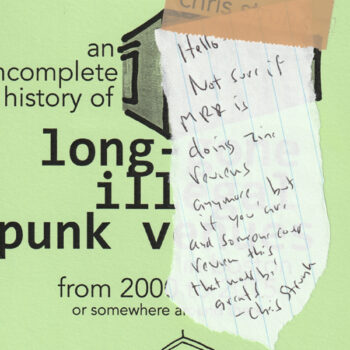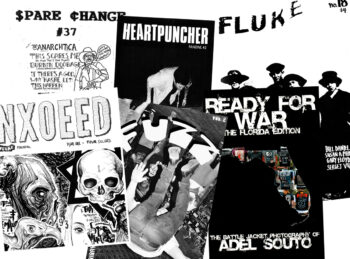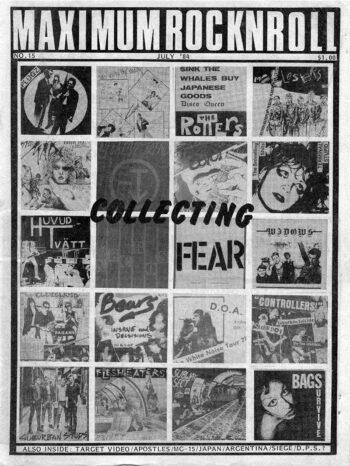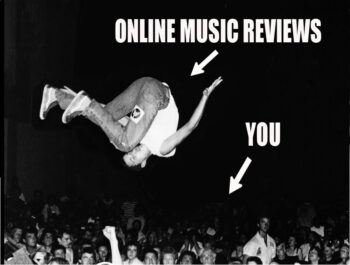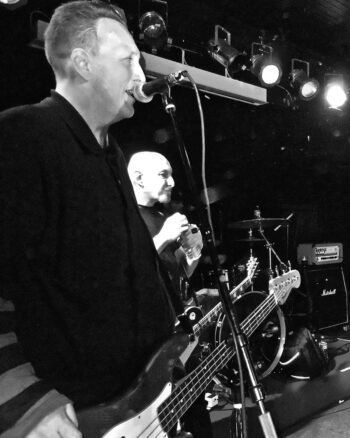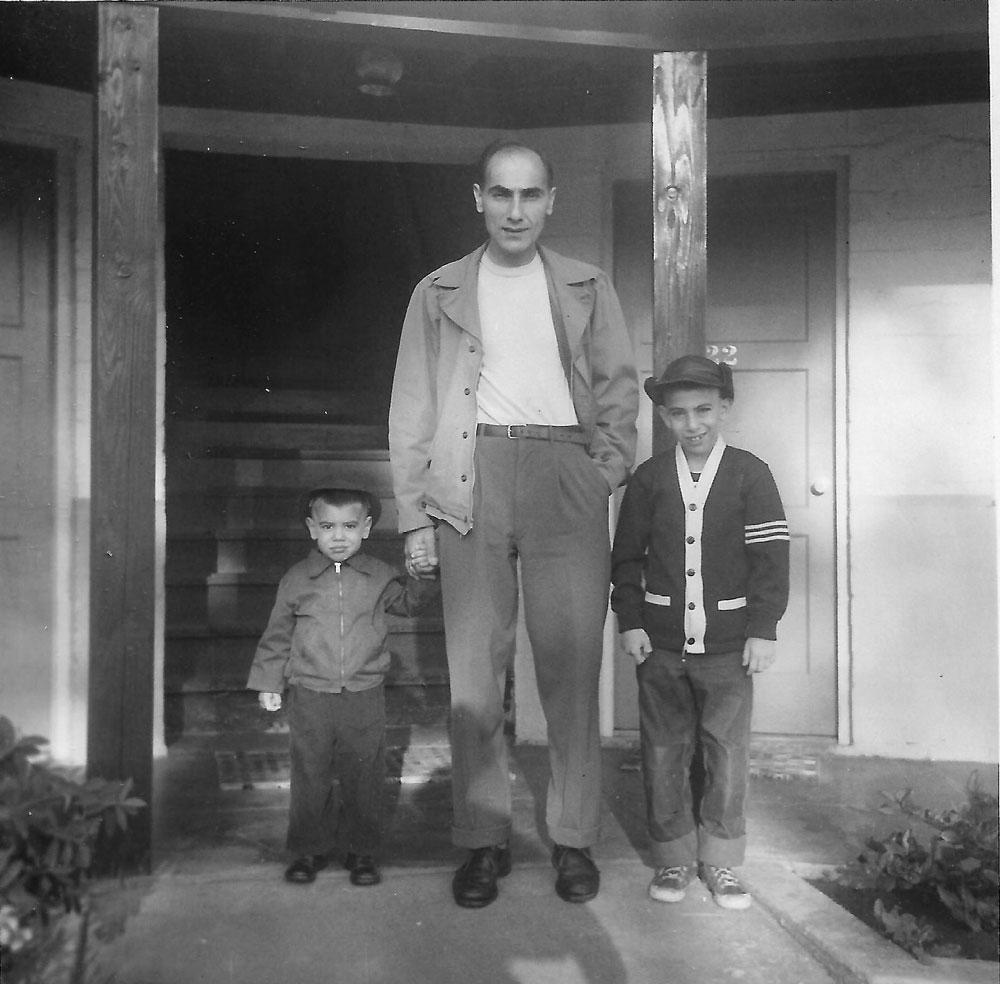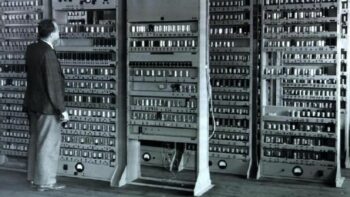We Got Ways #3: DEATHCHARGE
DEATHCHARGE — “The Hangman / New Dark Age” 7″ (Whispers in Darkness Records)
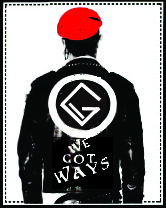 Generally speaking, this column—with its focus on punk records from 2000-2009—has two separate but related aspirations. The first is the more ambitious, if not occasionally pretentious: rethinking the conventional interpretations of and opinions on punk rock’s most recent past. I do this because I believe that the big picture of DIY punk music is often more complicated than a game of follow-that-trend would tell you. The second aim is more simple: providing quintessential drooling fanzine appreciations of songs/records/bands that are too eye-poppingly good to ignore, but have perhaps not been given their proper due. This particular installation of We Got Ways is meant to be more of the latter than the former, but in the end it may come back around again.
Generally speaking, this column—with its focus on punk records from 2000-2009—has two separate but related aspirations. The first is the more ambitious, if not occasionally pretentious: rethinking the conventional interpretations of and opinions on punk rock’s most recent past. I do this because I believe that the big picture of DIY punk music is often more complicated than a game of follow-that-trend would tell you. The second aim is more simple: providing quintessential drooling fanzine appreciations of songs/records/bands that are too eye-poppingly good to ignore, but have perhaps not been given their proper due. This particular installation of We Got Ways is meant to be more of the latter than the former, but in the end it may come back around again.
First, some background…
In the late 1990s into the early 2000s, Discharge-worship was simply not popular in the U.S. hardcore scene. Most bands were still in the throes of the emo (or the bring-your-dog-to-the-show crust) era, and the few interesting bands going were not overtly worshiping at the altar of that one beat popularized by those four blokes from Stoke-on-Trent. There were, however, a few relatively obscure exceptions, most notably some primitive sounding bands manned by a few obsessive, paranoiac, black-clad HC enthusiasts based in (pre-Portlandia) Portland, OR. One such band from that scene was the goofily named DEATHCHARGE, whose first EP (the even more goofily named A Look at Their Sorrow) came out in 1997 to absolutely no fanfare. Of course, given our current moment—in which a band that proudly calls itself “D-CLONE” is popular among DIY punx—it is difficult to comprehend how truly not of the zeitgeist Deathcharge’s Dis-obsessed music (which was simple, raw, minimal, and bordering on pastiche) was in 1997. If they had gained any casual fans with A Look at Their Sorrow, they promptly lost them both by not touring and by waiting four years to release their second EP, 2001’s Plastic Smiles. Despite apathetic responses among the punk masses, both EPs (which were pressed in microscopic quantities) have over the years come to be well regarded by a handful of the most obsessive fanatics of Discharge-influenced raw punk, who champion Deathcharge as a band that carried the torch when others didn’t seem to care. (In this way, the two Deathcharge EPs can be favorably compared to the 1991 Warcry 12″ by English D-beaters DISASTER, who played “Discharge-worship HC” at a time when that sub-genre was not yet codified as such. Without a doubt, both bands were true disciples of you-know-who, and as a result subsequent cultish devotees have made these bands part of their pantheon. Readers of this column should take this comparison as both a compliment and a warning: at this point in time—at least for this author—both that Disaster 12″ and the first two Deathcharge 7″s are more interesting as historical anomalies than as stone classics of the genre, especially given the transcendent output of recent bands such as, say, FIRMEZA 10.)
***
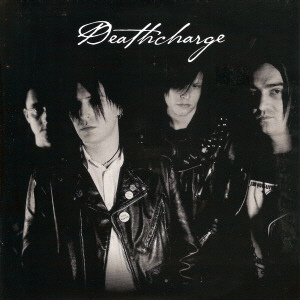 The few hundred words you just read notwithstanding, this column is not really about those first two good-but-not-great Deathcharge EPs. Rather, it is about one of the best—and most surprising—punk records from the 2000s: Deathcharge’s 2006 two-song single “The Hangman/New Dark Age.” Truth be told, I just spilled so much cyber-ink on those first two DC EPs in large part to accentuate how unexpected “The Hangman” was the first time I tossed it on the turntable. Let me set the scene: it was almost two AM at the MRR HQ in mid-2006, and I was in the midst of assigning that month’s vinyl to reviewers. (That’s how it works at Maximum: someone, usually a coordinator, listens to every record that comes in and decides 1. whether or not it is reviewable, and 2. who will review it.) When I first grabbed the record out of the bin, I raised a skeptical eyebrow at its art, which bore little resemblance to the thin-papered cut n’ paste sleeves of the first two DC records. I grew worried that the record was going to flat out suck: there was a Very Serious Rock Band photo of the boys on the front cover (complete with messy hair, leather jackets, and uh…English Dogs pins…), and their name was written across the front in what seemed to be (horror of horrors!) a font dangerously close to that used on Discharge’s Grave New World. I figured that Deathcharge had tired of crude Discharge worship, or maybe that they had noticed the popularity of bands like INEPSY (not to mention countless less worthy pretenders), who married the D-beat to a Motörhead and/or hard rock vibe. Certainly, they wouldn’t be the first (or regrettably, the last) HC band to “go rock.”
The few hundred words you just read notwithstanding, this column is not really about those first two good-but-not-great Deathcharge EPs. Rather, it is about one of the best—and most surprising—punk records from the 2000s: Deathcharge’s 2006 two-song single “The Hangman/New Dark Age.” Truth be told, I just spilled so much cyber-ink on those first two DC EPs in large part to accentuate how unexpected “The Hangman” was the first time I tossed it on the turntable. Let me set the scene: it was almost two AM at the MRR HQ in mid-2006, and I was in the midst of assigning that month’s vinyl to reviewers. (That’s how it works at Maximum: someone, usually a coordinator, listens to every record that comes in and decides 1. whether or not it is reviewable, and 2. who will review it.) When I first grabbed the record out of the bin, I raised a skeptical eyebrow at its art, which bore little resemblance to the thin-papered cut n’ paste sleeves of the first two DC records. I grew worried that the record was going to flat out suck: there was a Very Serious Rock Band photo of the boys on the front cover (complete with messy hair, leather jackets, and uh…English Dogs pins…), and their name was written across the front in what seemed to be (horror of horrors!) a font dangerously close to that used on Discharge’s Grave New World. I figured that Deathcharge had tired of crude Discharge worship, or maybe that they had noticed the popularity of bands like INEPSY (not to mention countless less worthy pretenders), who married the D-beat to a Motörhead and/or hard rock vibe. Certainly, they wouldn’t be the first (or regrettably, the last) HC band to “go rock.”
Before I continue, let me say that assigning records at MRR is a fairly thankless task, as it is quite difficult to listen to 75 or so records in a very compressed period of time. It is like eating 30 cupcakes in one sitting—i.e. way, way too much of a good (and sometimes not-so-good) thing. It is a time-consuming process that has little to do with what we usually mean by “listening to records.” The tedium of this task meant that while assigning records, I would listen to each record for only a handful of seconds at a time, get a quick sense of it, and then assign it for review. Occasionally, with bands I liked, I’d listen to a song or two. But once in a great while, I would be rendered unable to lift the needle off the grooves due to some arresting melody or unexpected riffage.
Anyway, back to the story at hand… As I was saying, I put the needle down on “The Hangman” and sat back to listen. That first go round, I listened to the song all the way through. And then I listened to it all the way through again. And then again. I was struck dumb: this song was an unrelenting monster. I had been expecting more-or-less pedestrian Discharge worship but got something else entirely; this version of Deathcharge sounded like a totally different band. Suddenly, the cover photo didn’t seem so cheesy anymore—in fact, it started to seem kinda cool. “The Hangman” was slow (by punk standards), and it rocked, but it was not the dreaded punk n’ roll throwaway. Instead, it was a creeping, lurching, and dark death punk anthem, the likes of which were—unsurprisingly, given Deathcharge’s apparent disinterest in punk trends—utterly unpopular in DIY punk at the time (unlike, ironically, the straightforward D-beat they had played to deaf ears the decade before).
Today it’s 2011 and dark, gloomy punk/HC with anarcho leanings is enjoying a revival in popularity despite the utter mediocrity and soullessness of most bands currently attempting the style. Deathcharge’s “The Hangman,” however, remains a fucking monster. I still put it on mix tapes all the time. The disgusted vocals on this song carry the day; the singer basically just spits and moans the words “ughhh…the hang…maaan“ over and over on top of disturbed, claustrophobic, almost goth rock (but still extremely catchy) guitar riffs. Honestly, this single is tough for me to describe, because it doesn’t call to mind any one obvious band a la Deathcharge’s early material (I’ve heard bands like Killing Joke, Amebix, Southern Death Cult, Antisect, etc. bandied about in regard to this record; I’m not sure if any of those are exactly apt). I can tell you, however, that this song is all about suffocating repetition: the guitar parts, vocals, and drums all repeat over a riff just slow enough to sound demented and menacing but just fast enough to still induce headbanging. I don’t know anything about the dudes in Deathcharge, but I am glad that they decided to ditch the D-beat and write this song. Oh, and the B-side “New Dark Age” is pretty cool too…
***
Too often, we buy records based on “sounds like” — if we like Gloom, we buy umpteenth generation Japanese crasher crust records. If we like Leatherface we buy Florida melodic punk records. If we like early Agnostic Front we buy whatever Counterfeit Garbage tells us to (that is, if we’re smart Agnostic Front fans…otherwise, who the fuck knows). But “sounds like” doesn’t always (or even often) tell us if a band is good or bad, or if their records are worth listening to. As punk record reviewers, we have to throw “sounds like” out of our review vocabulary. As punk record buyers, we have to give up on the urge to form our taste through “sounds like” (or even worse, “looks like”). The moral of this story is that we have to keep our ears perked for interesting or remarkable sounds, rather than just carbon copies of our already standardized tastes. Otherwise, where’s the fun?

